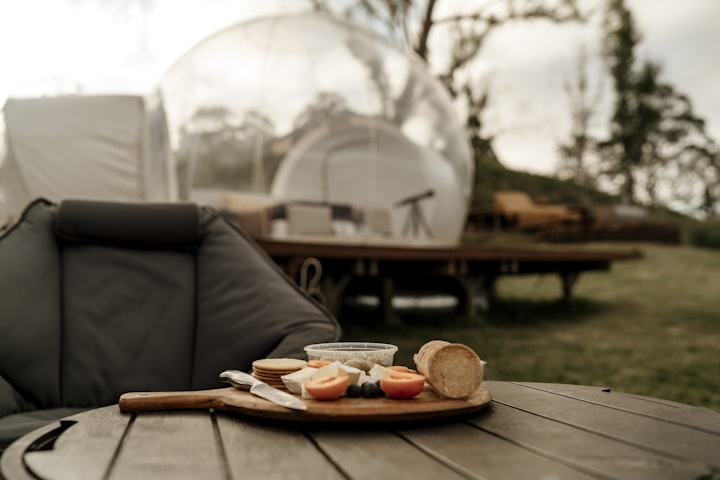Cooking with Toddlers: 8 Top Tips and a Failsafe Recipe
Prepare for mayhem!

Cooking together is an exciting, fun activity for small children, ideal for those rainy days when you don't feel like venturing out. It's filled with sensory experiences and opportunities for learning, but it can have its pitfalls. These top tips are a recipe for success.
1. Keep a cloth handy!
It's good to practise proper hand hygiene and instil the habit of thorough hand washing before starting to cook, but toddlers are a muck magnet and if you're cooking with delicious ingredients, then fingers are likely to get licked.
Keep the baby wipes on hand throughout so that when your toddler gets a face-full of cocoa powder or tries to return a licked finger to the mixing bowl, you can swoop in and rescue the situation. For added environmental kudos, try reusable wipes or a dampened face cloth.
2. A table knife can chop most things
Although knife handling is a great skill to learn, kitchen knives are heavy, sharp and pointy, and should be kept well away from toddlers. A decent quality table knife, especially one with a slightly serrated edge, is ideal for fruits and most vegetables, and your little one can safely have a go at softer items such as bananas or mushrooms, too. Alternatively, invest in a child-safe knife such as a Kiddi Kutter which is serrated but not sharp or pointed.
3. Child-safe Cupboard Locks
Once your little one has experienced the fun of cooking, they may wish to explore the items in the kitchen more often, and are surprisingly adept at remembering where the most interesting (dangerous) items are kept. Get some childproof locks fitted, and if a magnet is required to open the doors and drawers, then keep this well out of reach.
4. Keep it simple
We all know that a toddler's attention span can be unpredictable and short, so stick to simple recipes which require only a few ingredients. Weighing and measuring can be hit or miss with a toddler "helping," so you may find it easier to weigh out most of the ingredients beforehand, saving just one or two to do together.
If part of the preparation process is lengthy, do this in advance. For example, most pastry and biscuit dough can be prepared the night before and chilled in the fridge so that the following day, you and your child can enjoy rolling out and using cutters to make shapes together.

Cutting out biscuits or pastry in your child's favourite theme is a great way to get them involved. - Photo by Madison Grooms on Unsplash
5. Cook sweet and savoury
It can be easy to fall into the habit of only preparing cakes and cookies with your toddler, as these tend to be simpler. However, it's worth taking the time to find savoury recipes too so that children learn to value and enjoy vegetables. Many children are happier to eat something when they've helped to prepare it, so this is a great way to help fussy eaters to expand their horizons.
6. Allow sampling
Small children have very little impulse control, so expect them to want to taste the ingredients as they go. As well as keeping them energized and motivated, it will help them to appreciate the changes that happen during cooking—for example, carrots are crunchy when raw but tender when cooked. After all, a top chef would always taste during cooking, so encourage your toddler's innate curiosity.
Besides, if you're cooking with vegetables and your child eats more courgette than they'd ever touch during a meal, then that's one of their five a day that you don't need to worry about!
If you need to limit consumption of an ingredient, either for reasons of reducing sugar intake or because you do actually need some chocolate chips to go in the chocolate chip cookies, then give them their own saucer or ramekin, keeping the rest for cooking. You can also help them to develop delayed gratification by reminding them how tasty the cookies will be when they come out of the oven later!

Sampling the ingredients encourages children to try new flavours on their own terms. - Photo by Kelly Sikkema on Unsplash
7. Be safe with heat
Give your child a safe place to stand when you need to open the oven door, maybe a particular floor tile or next to the fridge. Your toddler will need to be able to see what's going on so that curiosity doesn't bring them closer, but at a safe distance where they can't be hurt by anything hot.
When cooking on the hob, anything that's likely to spit is a no-go, and anything else should be approached with extreme care.
A good way to show them how to handle saucepans safely is to make mashed potatoes. Once the potatoes are cooked and drained, allow the saucepan to cool a little before getting your toddler to wield the masher. Place the saucepan on a stable, heatproof surface and show your child how to hold the handle of the pan only (or do this yourself whilst they mash) to help them to get into the habit. If they accidentally touch the pan, it will be hot and reinforce your message, but not so hot that it hurts. You can always reheat cold mash once your small person has finished pounding it.
Children should always be supervised in the kitchen.
8. Go with the flow when cleaning up
A bit (or a lot) of mess is almost inevitable. The concentration required during cooking can be quite intense, so although in an ideal world your toddler would learn how to do the washing up after they've used the kitchen, this probably isn't feasible. If they need some quiet time to wind down with some toys after you've cleaned them up, then this can be a great chance to wipe down and get washed up.
Some toddlers, however, love to wash up, so if you're fairly relaxed about water cascading onto the floor, then let them splash about at the sink and enjoy it. You may have to do the washing up for real after bedtime though!
Other tasks to encourage them to help could be sorting empty packets into the correct recycling bin, or putting their favourite cookie cutter away once it's been washed up.

Be prepared for a bit of cleaning up. - Photo by Rawpixel on Unsplash
Failsafe Banana Flapjack

Failsafe Banana Flapjack: Easy to make, great for preschooler lunch boxes and family days out
This tasty, simple recipe is perfect for cooking with toddlers. Quick and easy, it involves mashing and mixing, is full of fruit, and all the ingredients are safe to eat raw. What could possibly go wrong?
The recipe below is for one banana, but can easily be multiplied up. The weights are to give an approximate guide only, and can be varied depending on the size and ripeness of the banana or the vigorous enthusiasm of your toddler for tipping too much in or spilling plenty along the way!
The flapjack in the image above was made using two small bananas.
Ingredients
- One ripe banana, peeled
- Approx 30g oats
- Approx 30g mixed dried fruit, chopped
Method
- Preheat the oven to 200°C/180°C Fan.
- Grease and line the base of a small ovenproof dish with baking paper.
- Place the banana in a large bowl and mash with a fork or potato masher. Stir in the oats, then add the dried fruit and stir until well mixed.
- Spoon into the dish and bake for 20-25 minutes until firm and slightly golden on top. Allow to cool before slicing into bite-sized pieces.
Variations:
- Pre-bought "Island Mix" dried fruit gives a great, tropical variety to complement the banana flavour.
- Dark chocolate chunks and glace cherries make these even more moreish.
- Experiment with your child's favourite dried fruit, or encourage their inner Heston and see what ingredients they can come up with!
Like this recipe? Check out my blog Millennial Hunter Gatherer for more!
About the Creator
Laura Ansbro
Freelance writer, parent, food worshipper, occasional skin-flint
Check out my blog www.millennialhuntergatherer.com for a little bit more of the foodie stuff






Comments
There are no comments for this story
Be the first to respond and start the conversation.